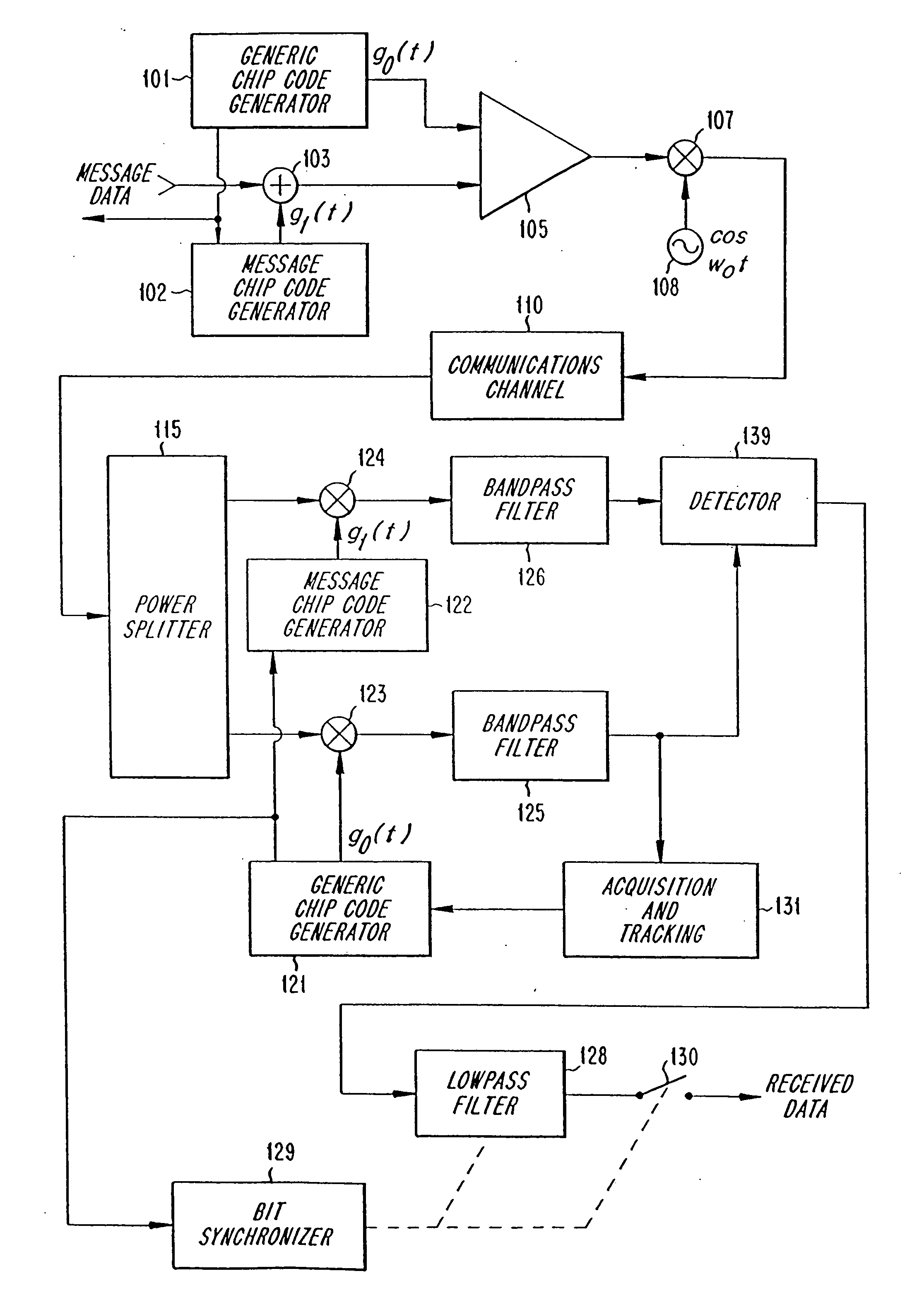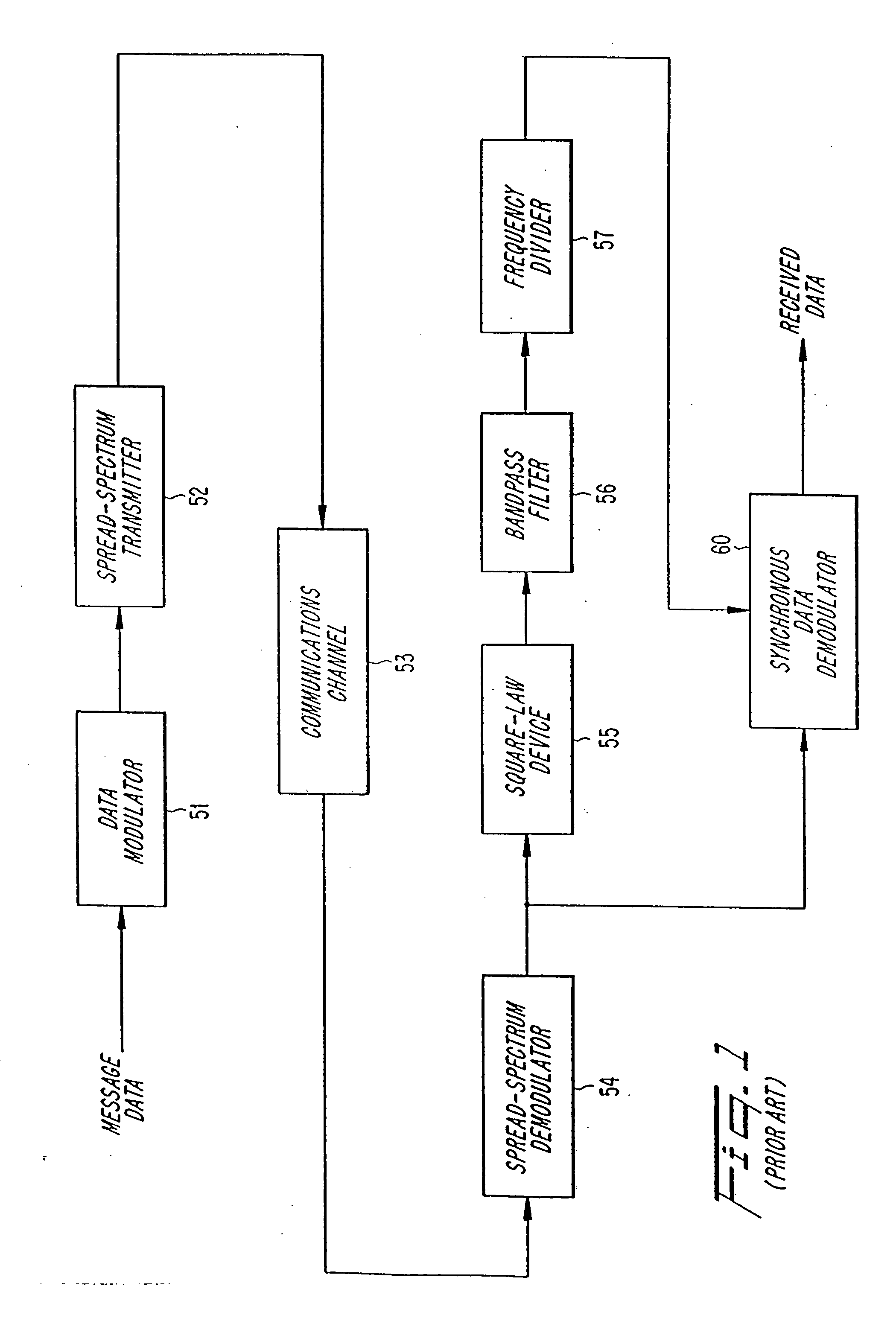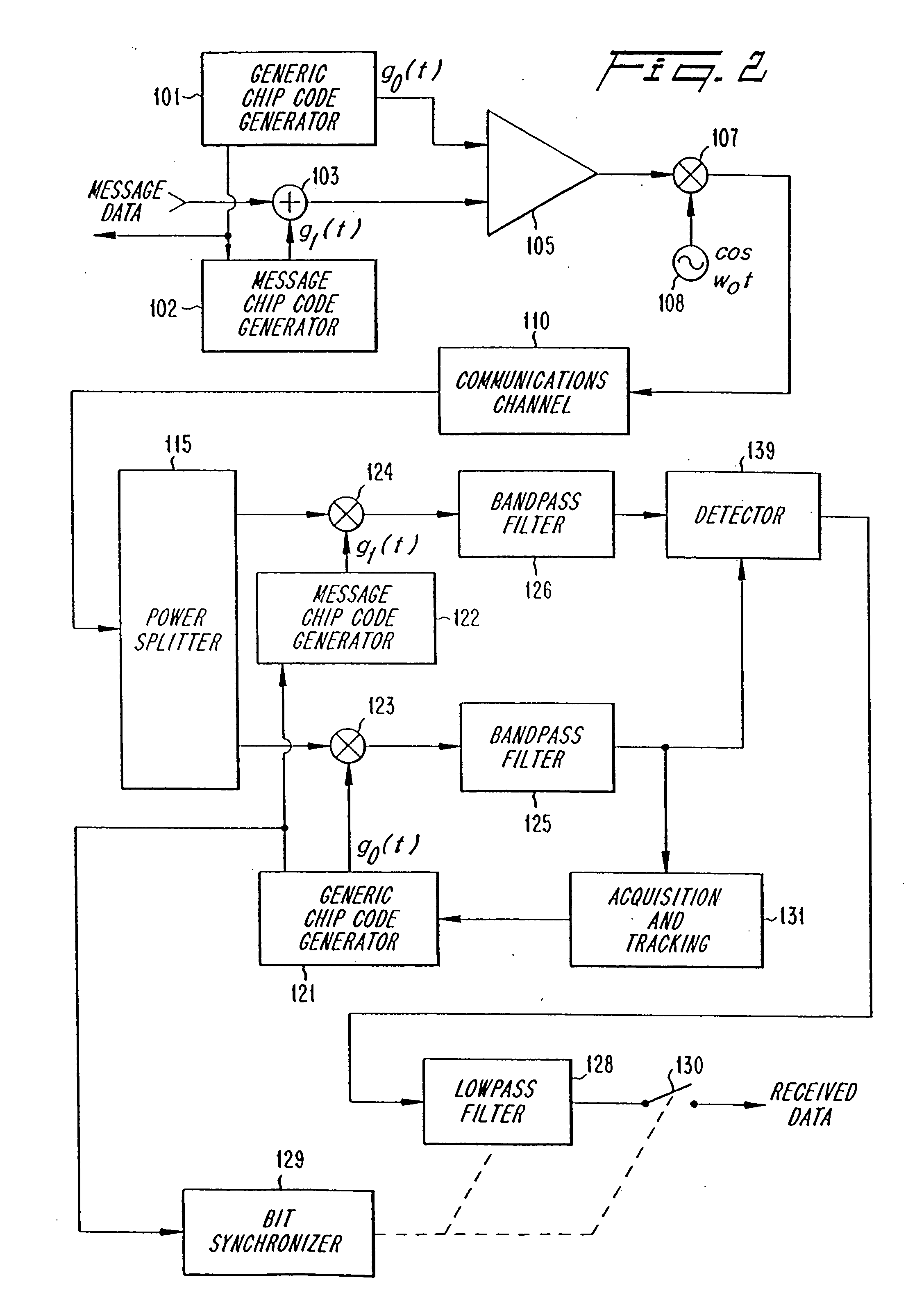Orthogonal code synchronization system and method for spread spectrum CDMA communications
a synchronization system and synchronization method technology, applied in multiplex communication, wireless commuication services, instruments, etc., can solve the problems of inability to achieve synchronous demodulation, inability to provide a system and method for synchronous communication, and complex system, etc., to achieve easy use of orthogonal codes, small impact on the total power transmitted, and stable reference
- Summary
- Abstract
- Description
- Claims
- Application Information
AI Technical Summary
Benefits of technology
Problems solved by technology
Method used
Image
Examples
Embodiment Construction
[0032] Reference is now made in detail to the present preferred embodiments of the invention, examples of which are illustrated in the accompanying drawings, wherein like reference numerals indicate like elements throughout the several views.
[0033] The spread-spectrum communications and orthogonal code synchronization system and method of the present invention is an extension of an invention disclosed in a U.S. patent application entitled, SYNCHRONOUS-SPREAD-SPECTRUM COMMUNICATIONS SYSTEM AND METHOD, by Donald L. Schilling, having Ser. No. 07 / 626,109 and filing date of Dec. 14, 1990, now issued U.S. Pat. No. 5,228,056. For completeness of disclosure, the following discussion includes the disclosure presented in the original patent application, and subsequently goes into a discussion of orthogonal code synchronization according to the present invention.
[0034] The spread spectrum signals of the present invention are designed to be “transparent” to other users, i.e., spread spectrum ...
PUM
 Login to View More
Login to View More Abstract
Description
Claims
Application Information
 Login to View More
Login to View More - R&D
- Intellectual Property
- Life Sciences
- Materials
- Tech Scout
- Unparalleled Data Quality
- Higher Quality Content
- 60% Fewer Hallucinations
Browse by: Latest US Patents, China's latest patents, Technical Efficacy Thesaurus, Application Domain, Technology Topic, Popular Technical Reports.
© 2025 PatSnap. All rights reserved.Legal|Privacy policy|Modern Slavery Act Transparency Statement|Sitemap|About US| Contact US: help@patsnap.com



